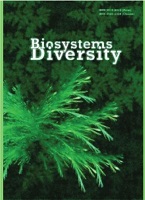Assessment of metal trace elements in the echinoderm Paracentrotus lividusfrom the North-Eastern coast of Algeria
Assessment of metal trace elements in the echinoderm Paracentrotus lividusfrom the North-Eastern coast of Algeria
Author(s): K. Boudeffa, F. Fekrache, S. Bouhayene, N. Bouchareb, L. Zaoui, A. Benselhoub, S. BellucciSubject(s): Energy and Environmental Studies, Environmental Geography, Health and medicine and law, Environmental interactions
Published by: Дніпропетровський національний університет імені Олеся Гончара
Keywords: sea urchin; bioindicator; heavy metals; marine pollution; Skikda; Mediterranean Sea;
Summary/Abstract: The echinoderm sea urchin Paracentrotus lividusLamarck, 1816 (Echinodermata,Echinoidea) is a good species to be used in environmental and toxicology research, in particular as a heavy metal bio-indicator. Our study’s objective is to evaluate the amounts of Zn, Pb, Fe, and Cu in sea urchin specimens collected from the coast of Skikda (Northeast Algeria) in order to validate the fact that sea urchins are good indicators of metal pollution and can be used effectively for environmental biomonitoring. To realize our objectives, three sampling sites were chosen based on suspected forms and sources of contamination. The main physicochemical parameters of the seawater were measured to determine their quality. 15 specimens of urchins in each station were obtained from exposed rocky surfaces and transported to the laboratory. Before dissection, the biometric parameters and the total wet weight were determined. The soft organs (gut and gonads) of individuals were separated and utilized to evaluate the levels of heavy metals. The condition index and metal indices were also determined. Our study confirmed that P. lividus may be considered a valuable bioindicator of heavy metal contamination in marine ecosystems. The results show that the amounts of heavy metals differed significantly between stations. Samples taken from the Larbi Ben M’hidi station showed greater amounts of Pb, Zn, and Cu. These amounts are above the recommended limits for fish and aquatic animals. Also, the heavy metals found in sea urchins vary depending on the physicochemical parameters, trace metals in the seawater, and the individual biometric parameters. These higher concentrations of metals in seawater and in P. lividusindividuals at the Larbi Ben M’hidi station are largely caused by the construction of a massive oil industry complex and terminal with several refineries and petrochemical units near this station, as well as by a considerable amount of domestic wastewater. Finally, to avoid this metallic pollution risk, it is necessary that permanent controls be imposed as soon as possible. Urban and industrial wastes must be treated before being released, in the hope of reducing future metal concentrations.
Journal: Biosystems Diversity
- Issue Year: 31/2023
- Issue No: 2
- Page Range: 170-176
- Page Count: 7
- Language: English

